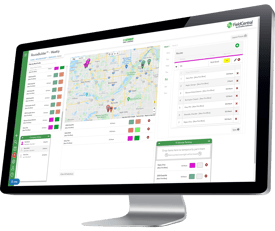
We’re in the middle of March Madness and I’ve been watching a lot of basketball lately. And there’s something I’ve learned: Teams with unique systems that are difficult to prepare for are very hard to beat in the tournament.
Take Virginia Commonwealth. They burst onto the scene a couple years ago when they were the first team to go from a play-in game to the Final Four. They did it with a system that heavily pressured the ball. Or take a team like Wisconsin. Prior to this year, they’d won 5 straight first round games because their deliberate game was hard to mimic in practice. Or take John Cheney and his Temple team; His zone defenses were a nightmare to prepare for, which translated into 12 first round victories in 16 appearances.
What does all of this have to do with your field service business?
If you want to beat your competitors, you’re going to need strong systems in place to do it. Consider that everything you do – from answering a phone to mowing a lawn – is a system that needs to be refined so that it runs as efficiently as possible.
Here are some tips to help you analyze and improve your systems:
- Start by writing down all of the tasks in your business. What do you do? Make a detailed list of every task you do. For HindSite, that means everything from marketing to sales to support to training to programming. For instance, our marketing team sends out a customer newsletter every month, they blog a couple times a week, they create emails, they post to our social media properties, they create client testimonials, etc. Write down all the tasks you do.
- For each of those tasks, write down the process used to complete it. This is where it gets laborious. But it’s worth the effort. Document what steps you take for each of these tasks. For instance, if you’re scheduling using HindSite’s field service scheduling software, you’d document the steps it takes to schedule someone.
- Next, see if there are any redundant steps in the process or anything that makes it take longer to complete. Ah, the hard part is over. Now it’s time to look at your processes and see what’s wrong with them. An example of this? We send a customer newsletter using a different email system than we use for all other emails. Because of that, in order for us to analyze the results of our newsletter, we need to use a different system. This came about because we used one system for email, and another for lead tracking. Our lead tracking system then developed the ability to send emails, but we didn’t transition our customer emailing activities over to the new system. The solution: Transition everything to a single provider.
- Determine if there are any ways to streamline the task with technology. If you’re like many of our customers prior to installing HindSite’s field service software, simple things like scheduling a work order involve a lot of paperwork. Your office manager receives a call, takes down the customer information, and the paper shuffle begins. Before you know it, you’re buried in a pile of paperwork. But you don’t need all that paper if you install HindSite and leverage the power of mobile field service software. By leveraging technology to improve the process, you gain significant efficiencies, efficiencies that help you reallocate your resources and ultimately become more profitable.
By better understanding your systems, you can find ways to eliminate waste, save time and improve your competitiveness. It’s a (pardon the pun) slam dunk!







